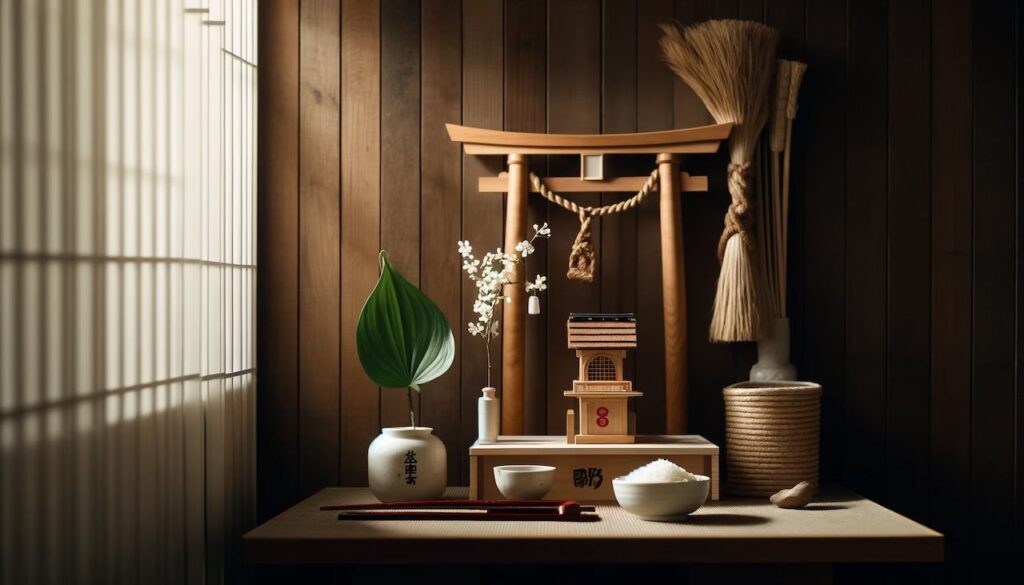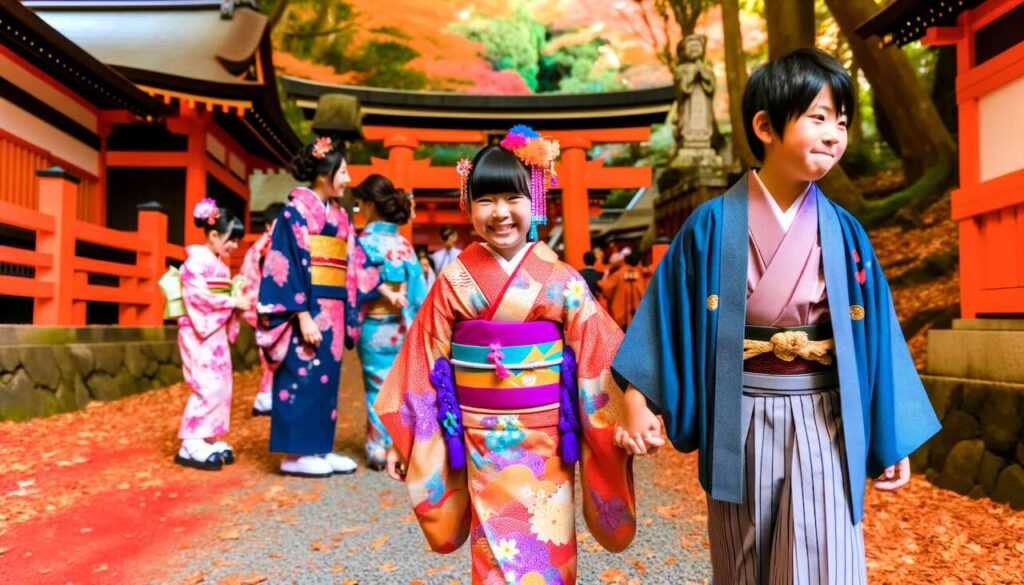In the quiet corners of many Japanese homes and workplaces, you may find a small wooden shelf adorned with offerings and a sense of reverence. This is the kamidana, or “god shelf”—a sacred space for honoring Shinto deities. But where did this tradition come from, and what makes it such an integral part of Japanese spiritual life?
In this article, we’ll explore the origins, meaning, and cultural significance of kamidana, tracing their roots through Japanese history and comparing them with similar practices around the world.
What Is a Kamidana?
A kamidana (神棚) is a miniature Shinto altar, typically placed high on a wall to house sacred objects and facilitate daily worship. At its center is a shintai, an object (often a talisman or ofuda) that represents a kami, or divine spirit. Accompanying offerings—such as rice, salt, water, and sake—are refreshed regularly as a gesture of gratitude and respect.
Kamidana are used to invite the presence and protection of the gods into the home or workplace, serving as a spiritual link between humans and the divine.
The Spiritual Role of Kamidana
The kamidana is more than a decorative shelf—it’s a spiritual practice embedded in everyday life. People use it to:
- Offer daily prayers for safety, health, and prosperity
- Express gratitude to the kami for blessings received
- Honor ancestral spirits, maintaining familial bonds across generations
- Mark seasonal rituals such as New Year celebrations or the changing of the harvest
By maintaining a kamidana, individuals symbolically invite the kami to reside in their space, reinforcing the deep connection between nature, ancestry, and the divine—a central theme in Shinto belief.
Historical Roots: Where Did the Kamidana Come From?
While no single individual invented the kamidana, the concept of a sacred dwelling for deities dates back to ancient Shinto practices. Early Japanese texts like the Kojiki and Nihon Shoki reference kamikura—places where gods were believed to descend—and kandono, or god-halls, precursors to the modern kamidana.
By the Nara period (710–784 CE), aristocratic households included sacred spaces called misaisho, dedicated to Shinto worship. These evolved into the kamidana we recognize today, particularly during the Heian period (794–1185 CE).
The Rise of Kamidana in Everyday Life
Over the centuries, kamidana transitioned from elite households to samurai residences, and eventually to common homes by the Edo period (1603–1868). This era saw a revival of Shinto practices among the general public, and kamidana became a widely accepted symbol of household piety.
The Meiji period (1868–1912) further promoted their use under State Shinto, as the government encouraged families to venerate kami—especially local deities and national shrines—in the home.
Kamidana in the Modern World
Today, kamidana are still found in:
- Traditional Japanese homes
- Businesses (especially those seeking prosperity and safe operations)
- Martial arts dojos and cultural schools
- Shinto priests’ homes and local community centers
Though their use has declined in urban areas, kamidana remain a cherished part of spiritual practice for many, blending tradition with daily mindfulness.
Is the Kamidana Uniquely Japanese?
While the concept of domestic altars exists in many cultures, the form and function of the kamidana are distinctly Japanese. For example:
- In Chinese Taoism, similar altars called shen kan serve as places to honor deities and ancestors
- In Hinduism, the puja room is a dedicated space for ritual offerings and prayers
- In Vietnamese households, ancestral altars play a central role in family life
What sets the kamidana apart is its foundation in Shinto, Japan’s indigenous religion, and its symbolic architecture—drawing from shrine design and mythology to create a uniquely Japanese spiritual space.
Conclusion
The kamidana is a deeply rooted expression of Japanese spirituality, connecting households to the divine and reinforcing a centuries-old relationship between nature, gods, and people. From its ancient origins to its modern-day role, the kamidana serves not only as a sacred altar but also as a cultural touchstone—a symbol of continuity, reverence, and gratitude.
As Japan continues to evolve, the kamidana endures as a quiet but powerful reminder of the spiritual rhythms that shape everyday life.


